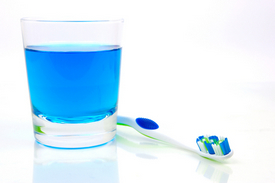 You are probably familiar with dental fillings for dental care treatment. Using dental fillings, a dentist can restore tooth structure that has been damaged or decayed. This restores the overall integrity of the tooth, prevents root canal infections, and also allows patients to maintain as much natural tooth structure as possible.
You are probably familiar with dental fillings for dental care treatment. Using dental fillings, a dentist can restore tooth structure that has been damaged or decayed. This restores the overall integrity of the tooth, prevents root canal infections, and also allows patients to maintain as much natural tooth structure as possible.
Sometimes the tooth decay or tooth damage that a person experiences is too serious for a traditional dental filling, however. That is when the team at our cosmetic dentistry center turns to inlays and onlays. Since there are a number of misconceptions about the nature of inalys and onlays, we’d like to go over some of the basics right now.
What are inlays and onlays?
Inlays and onlays are dental restorations. They are similar in a lot of ways to traditional dental fillings but are larger and able to restore more of a tooth’s structure. Inlays and onlays are so effective that they are able to rebuild the cusps (biting surfaces) of the teeth.
Best Candidates for Inlays and Onlays
The best candidates for inlays and onlays are patients who have experienced major tooth decay or tooth damage and are no longer ideal candidates for dental fillings. There should be enough healthy tooth structure remaining for the inlays to be supported. During the consultation process, your dentist will note the extent of the damage to your teeth and determine the most ideal and conservative treatment possible.
The Inlays and Onlays Procedure
During the inlays and onlays procedure, the tooth must first be prepped for the dental restoration. This will involve the removal of any compromised tooth structure. An impression is then taken of the prepped tooth from which the inlay or onlay is then fashioned. The dentist will check fit and color match prior to adhering the inlay or onlay in place.
Alternatives to Inlays and Onlays
We mentioned working as conservatively as possible above, and that really is key to effective dental restoration treatment. The more a patient’s natural tooth structure can be maintained, the better it is for the patient in the long run.
With this in mind, the ideal restoration is always a dental filling since it’s the least invasive. After inlays and onlays, the last option for saving the tooth is a dental crown, which is a cap that fits snugly over the damaged or decayed tooth. If a patient is not even an ideal candidate for the dental crown, the best option is extraction of the tooth in order to prevent infection or other serious dental problems.
Good Dental Hygiene Is Key
The unstated fact is that the best thing patient can do for their dental health is to take good care of their teeth. This means brushing at least twice a day and flossing every night. Ideally, you should brush and floss after every meal.
In addition, patients need to see their dentist twice a year for regular check ups. Being visiting the dentist every six months, the need for a relatively substantial dental restoration like an inlay or an onlay is reduced since problems can be caught sooner rather than later.
Learn More About Your Dental Care Options
For more information about inlays, onlays, and your many other options for treating tooth damage and tooth decay, you need to speak with dental health experts. To schedule an appointment for advanced dental care, be sure to contact our Frisco cosmetic dentistry center today.




